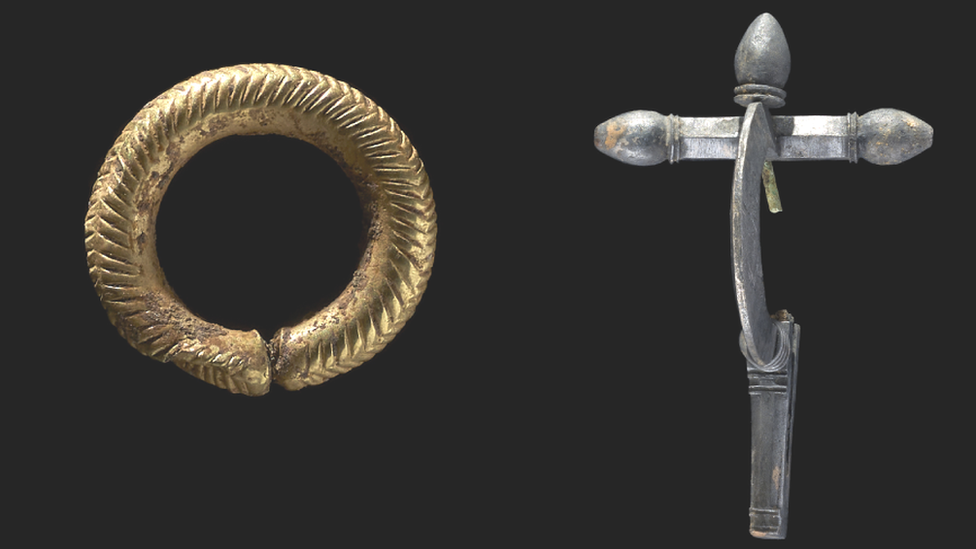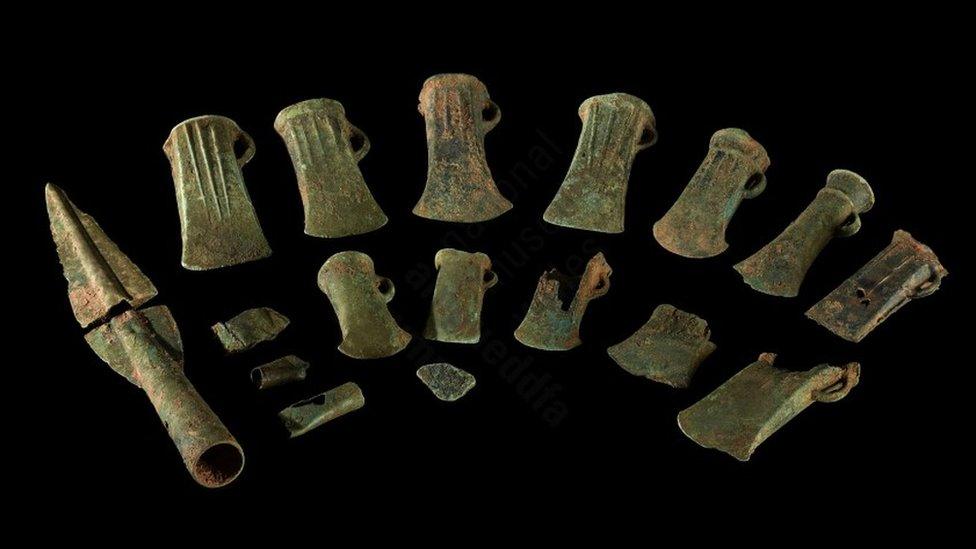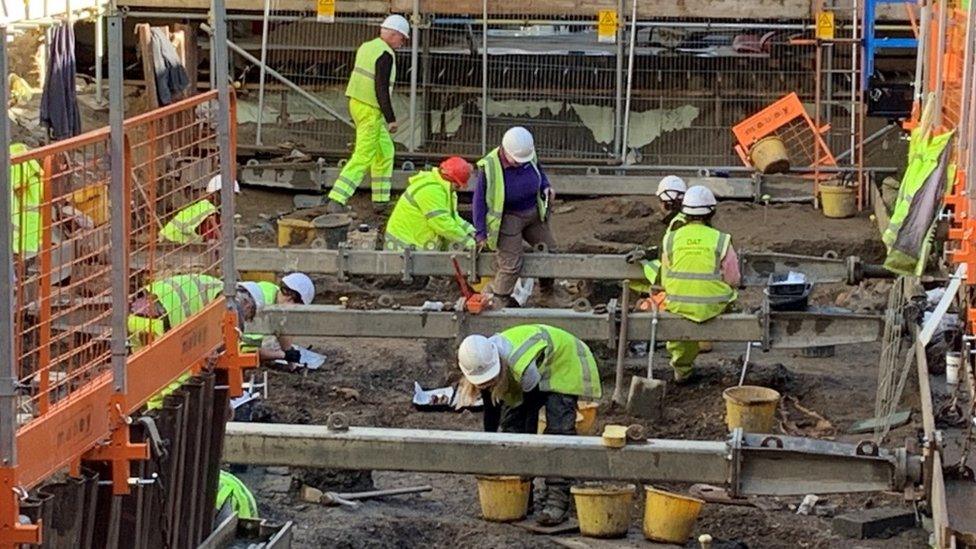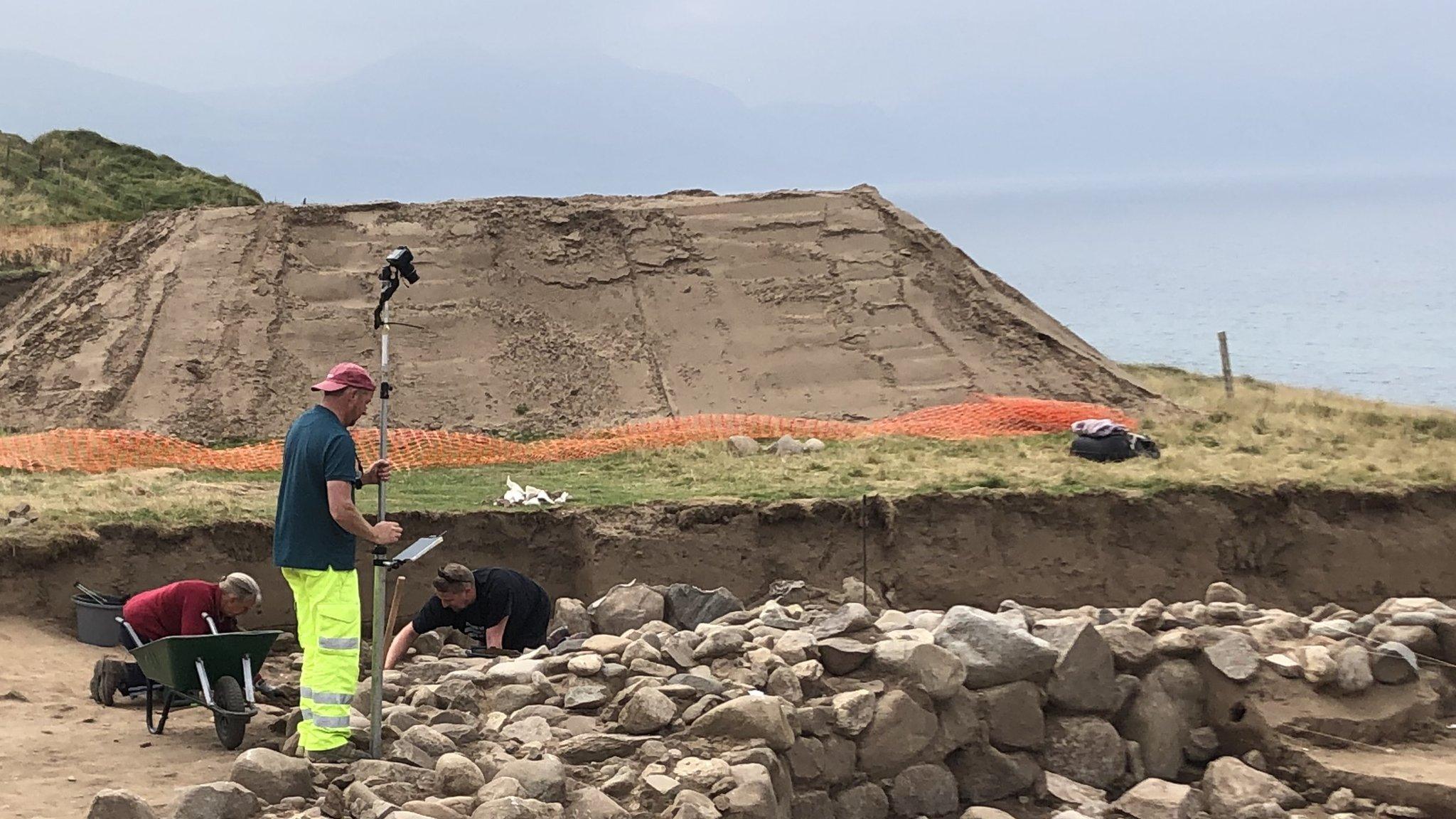Treasure: Spearhead, wooden comb among south Wales finds
- Published

A gold penannular (a circle with a break) ring and silver brooch were also declared treasure at an inquest
Five ancient artefacts found in south Wales, including a bronze spearhead from 1000 BC, have been declared treasure.
The discoveries also included a small gold ring, silver crossbow brooch, and remains of an iron sword.
In addition to the treasure, the remains of a young man in military uniform were found in a field.
But according to David Gilbert, of Rubicon Heritage Services, the most important artefact is a wooden comb.
He described the comb, which dates back to the Middle Bronze Age (1300-1150 BC), as "a find without parallel in Wales, if not the UK".
The fragmentary comb, found in St Nicholas and Bonvilston area in the Vale of Glamorgan, has eight narrow and parallel teeth surviving and is in a highly fragile state.
It is an extremely rare survival of an organic artefact, its survival in the soil having been helped by its burnt charcoal state.
The five finds from the Bronze Age and Roman dates were declared treasure by the coroner for south Wales central.
Adam Gwilt, from National Museum Wales, said: "This cremation burial, with its accompanying gold ring and wooden comb, gives us a glimpse of life and death in Bronze Age times."

The National Museum Wales said it is interested in a number of the artefacts
A Roman silver brooch is also thought to be the first of its kind ever found in Wales and indicated the owner as high ranking either in the military or in wider society.
It was excavated in Vale of Glamorgan in 2017 as part of work ahead of a road building project and National Museum Wales is looking to acquire the brooch for public display.
Rachel Morgan, an archaeologist for Rubicon Heritage Services, said: "The inhumation (burial of the dead) of a young man in military regalia was an unexpected discovery within a Roman field system.
"The silver crossbow brooch with which the individual was buried indicated his important status within the military or wider society.
"He died some time between the mid-third to late fourth century, at which time this style of brooch had become a symbol of imperial administrators, so he was unlikely to have been an ordinary soldier and was evidently of some wealth."
A Bronze Age hoard of tools and weapons was also discovered by Richard Griffiths while metal detecting on a boggy field under pasture in Coychurch, Bridgend.
The hoard of seven bronze artefacts includes four fragmentary socketed axes, a spearhead, a palstave (a type of axe) and a casting jet (a piece of metal that fits into a mould opening).
Dating to the Late Bronze Age (1000-800 BC), the hoard was once buried in a small and isolated pit feature.
Mr Griffiths said: "I was very excited about finding this Bronze Age hoard and I'm really chuffed to know that my find is now a part of our shared history.
"To think that I was the first person to hold these objects after the last person who used them, thousands of years ago, is a special thing for me."
Related topics
- Published30 May 2022

- Published11 October 2022

- Published7 September 2021
